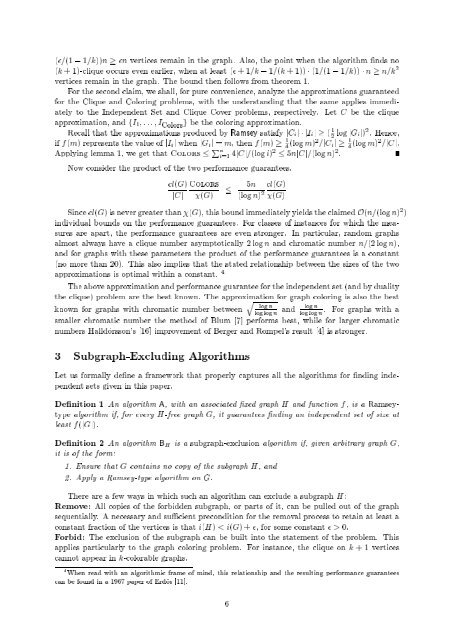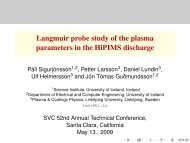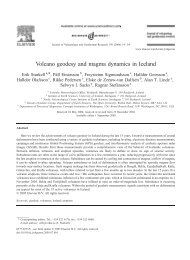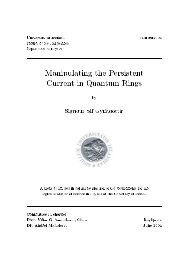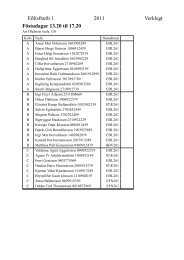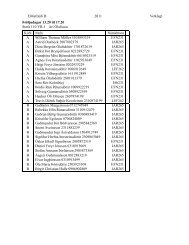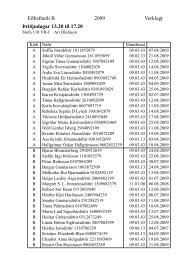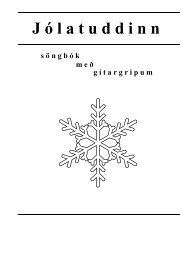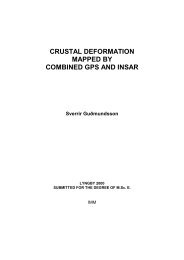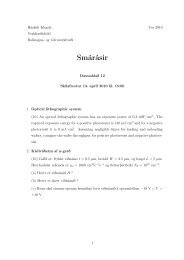Approximating Maximum Independent Sets by Excluding Subgraphs 1
Approximating Maximum Independent Sets by Excluding Subgraphs 1
Approximating Maximum Independent Sets by Excluding Subgraphs 1
Create successful ePaper yourself
Turn your PDF publications into a flip-book with our unique Google optimized e-Paper software.
(=(1 0 1=k))n n vertices remain in the graph. Also, the point when the algorithm nds no(k + 1)-clique occurs even earlier, when at least ( + 1=k 0 1=(k + 1)) 1 (1=(1 0 1=k)) 1 n n=k 2vertices remain in the graph. The bound then follows from theorem 1.For the second claim, we shall, for pure convenience, analyze the approximations guaranteedfor the Clique and Coloring problems, with the understanding that the same applies immediatelyto the <strong>Independent</strong> Set and Clique Cover problems, respectively. Let C be the cliqueapproximation, and fI 1 ; . . . ; I Colors g be the coloring approximation.Recall that the approximations produced <strong>by</strong> Ramsey satisfy jC i j 1 jI i j ( 1 log jG 2 ij) 2 . Hence,if f(m) represents the value of jI i j when jG i j = m, then f(m) 1(log 4 m)2 =jC i j 1(log 4 m)2 =jCj.Applying lemma 1, we get that Colors P ni=14jCj=(log i) 2 5njCj=(log n) 2 .Now consider the product of the two performance guarantees.cl(G) ColorsjCj (G)5n cl(G)(log n) 2 (G)Since cl(G) is never greater than (G), this bound immediately yields the claimed O(n=(log n) 2 )individual bounds on the performance guarantees. For classes of instances for which the measuresare apart, the performance guarantees are even stronger. In particular, random graphsalmost always have a clique number asymptotically 2 log n and chromatic number n=(2 log n),and for graphs with these parameters the product of the performance guarantees is a constant(no more than 20). This also implies that the stated relationship between the sizes of the twoapproximations is optimal within a constant. 4The above approximation and performance guarantee for the independent set (and <strong>by</strong> dualitythe clique) problem are the best known. The approximationqfor graph coloring is also the bestlog nknown for graphs with chromatic number betweenlog log n and log nlog log n . For graphs with asmaller chromatic number the method of Blum [7] performs best, while for larger chromaticnumbers Halldorsson's [16] improvement of Berger and Rompel's result [4] is stronger.3 Subgraph-<strong>Excluding</strong> AlgorithmsLet us formally dene a framework that properly captures all the algorithms for nding independentsets given in this paper.Denition 1 An algorithm A, with an associated xed graph H and function f, is a Ramseytypealgorithm if, for every H-free graph G, it guarantees nding an independent set of size atleast f(jGj).Denition 2 An algorithm B H is a subgraph-exclusion algorithm if, given arbitrary graph G,it is of the form:1. Ensure that G contains no copy of the subgraph H, and2. Apply a Ramsey-type algorithm on G.There are a few ways in which such an algorithm can exclude a subgraph H:Remove: All copies of the forbidden subgraph, or parts of it, can be pulled out of the graphsequentially. A necessary and sucient precondition for the removal process to retain at least aconstant fraction of the vertices is that i(H) < i(G) + , for some constant > 0.Forbid: The exclusion of the subgraph can be built into the statement of the problem. Thisapplies particularly to the graph coloring problem. For instance, the clique on k + 1 verticescannot appear in k-colorable graphs.4 When read with an algorithmic frame of mind, this relationship and the resulting performance guaranteescan be found in a 1967 paper of Erd}os [11].6


